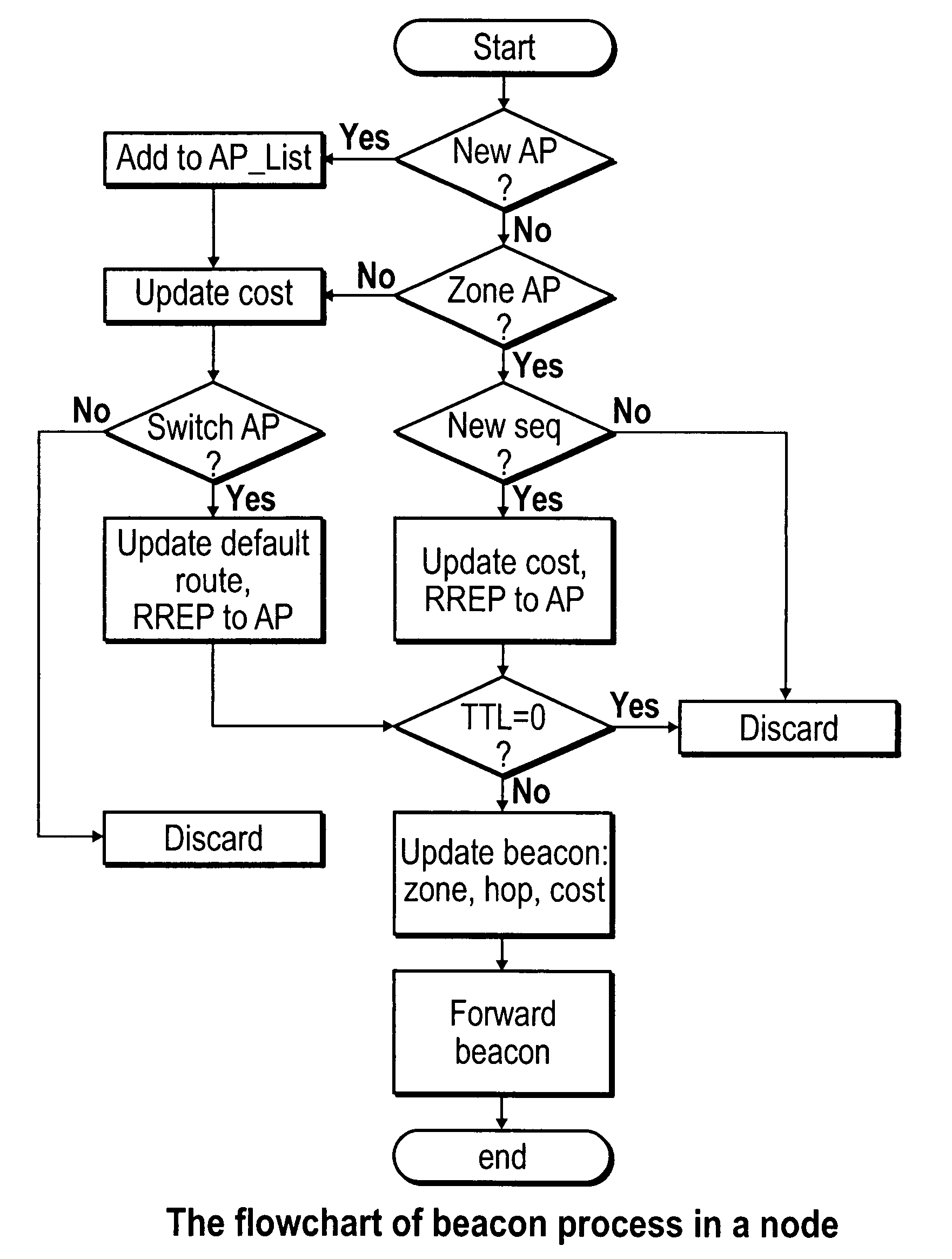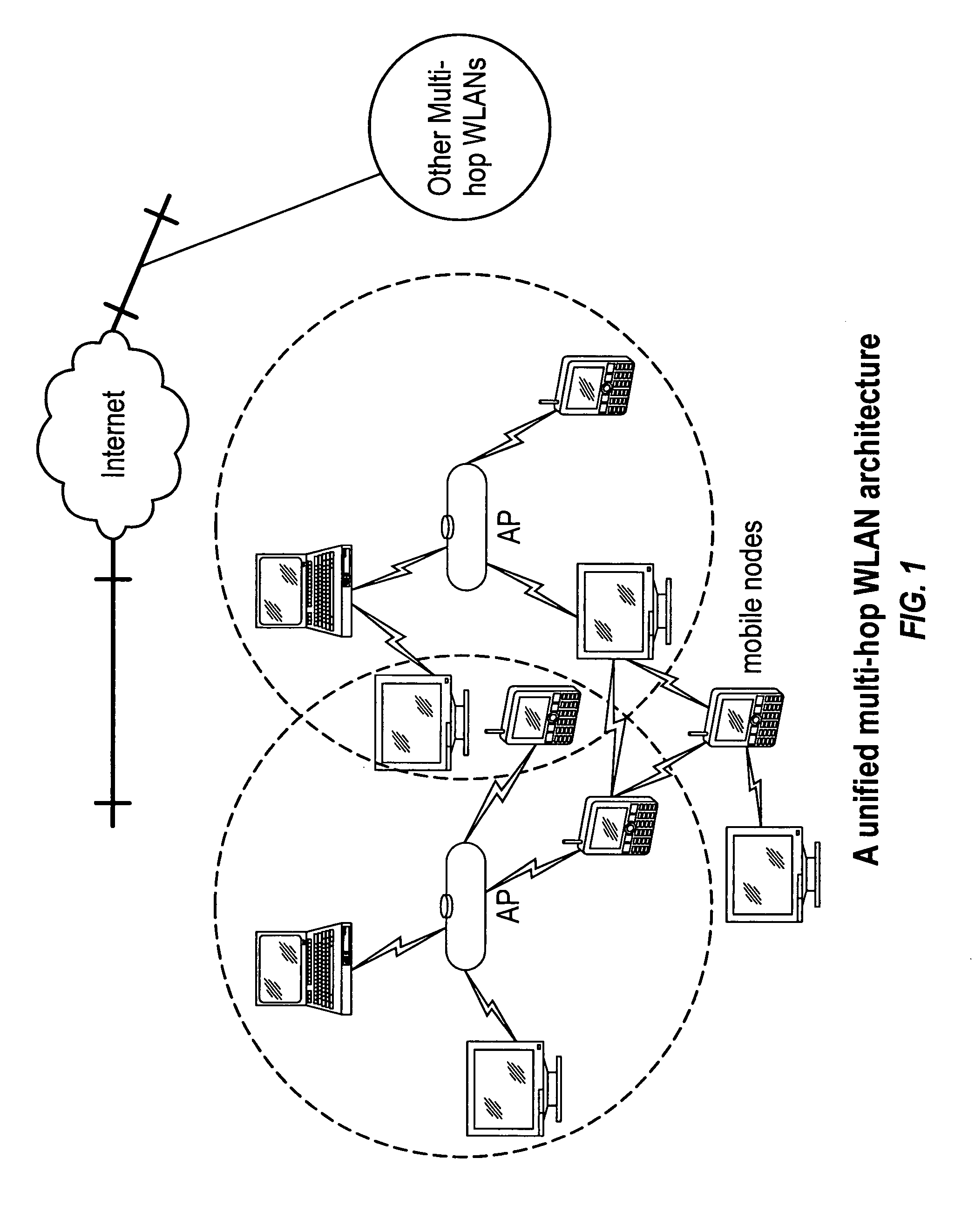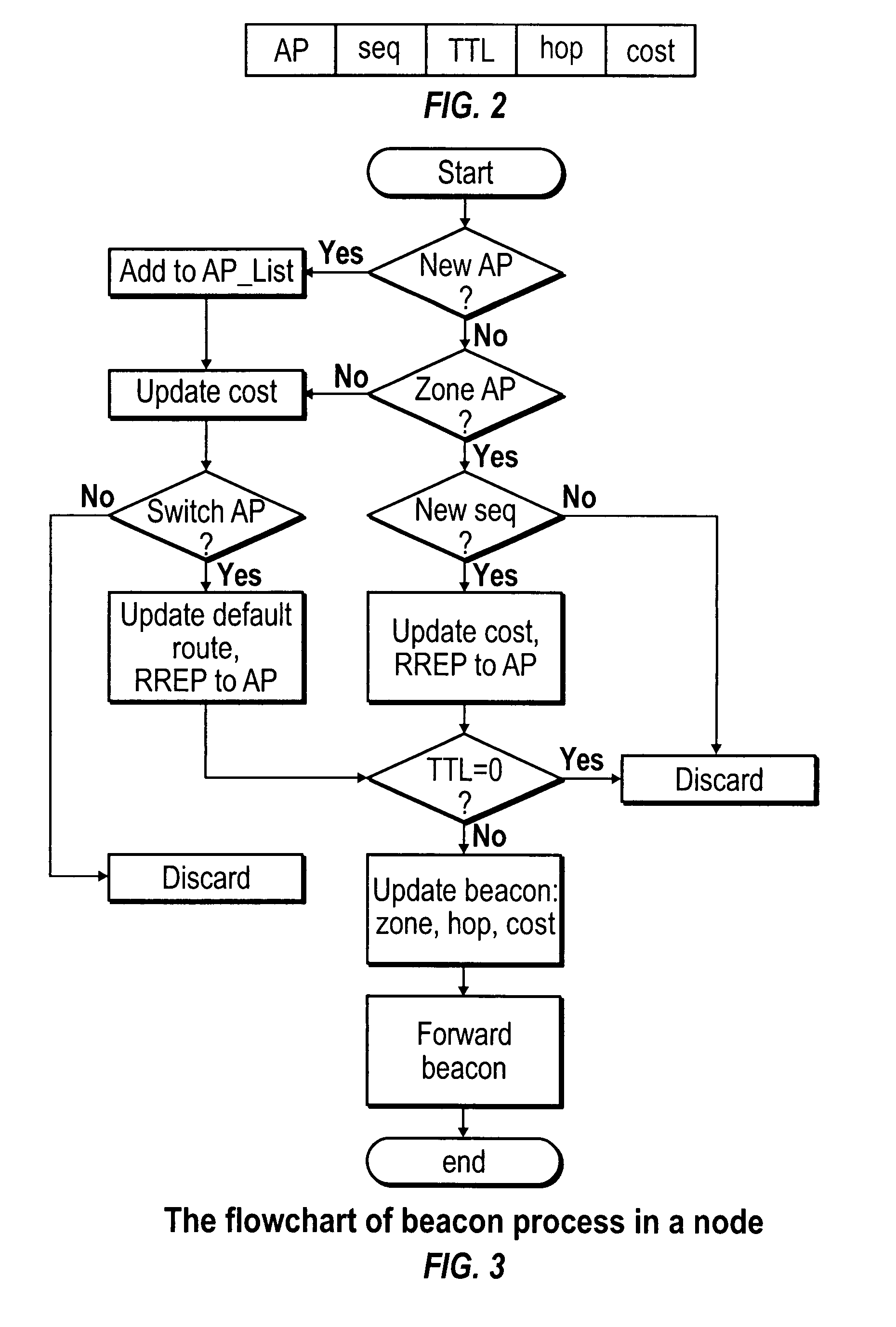Wireless infrastructure and ad hoc network integration
a technology of infrastructure and ad hoc network, applied in the field of wireless networks, can solve the problems of limited transmission range, low load-balancing capability and hence throughput, limited coverage, etc., and achieve the effect of extending coverage area, reducing deployment costs, and extending wireless coverag
- Summary
- Abstract
- Description
- Claims
- Application Information
AI Technical Summary
Benefits of technology
Problems solved by technology
Method used
Image
Examples
Embodiment Construction
[0029]The numerous innovative teachings of the present application will be described with particular reference to the presently preferred embodiment (by way of example, and not of limitation).
[0030]To achieve high availability and high throughput for multimedia access, the present innovations include seamlessly integrating wired infrastructure with the “ad-hoc” mode as defined in IEEE 802.11 standard. The project, termed Wireless Infrastructure and Ad-hoc Network Integration (WIANI), allows mobile users connect to APs through multiple hops and autonomously form local, groups for communication. The present innovations preferably include the zone concept and routing in WIANI, and its system and software architecture. The present application also provides implementation details of WIANI in Linux.
[0031]In one example embodiment, the present innovations include two parts: the load-balancing zone forming and weighted x-hop routing algorithms. A zone for an AP is defined by the nodes that ...
PUM
 Login to View More
Login to View More Abstract
Description
Claims
Application Information
 Login to View More
Login to View More - R&D
- Intellectual Property
- Life Sciences
- Materials
- Tech Scout
- Unparalleled Data Quality
- Higher Quality Content
- 60% Fewer Hallucinations
Browse by: Latest US Patents, China's latest patents, Technical Efficacy Thesaurus, Application Domain, Technology Topic, Popular Technical Reports.
© 2025 PatSnap. All rights reserved.Legal|Privacy policy|Modern Slavery Act Transparency Statement|Sitemap|About US| Contact US: help@patsnap.com



